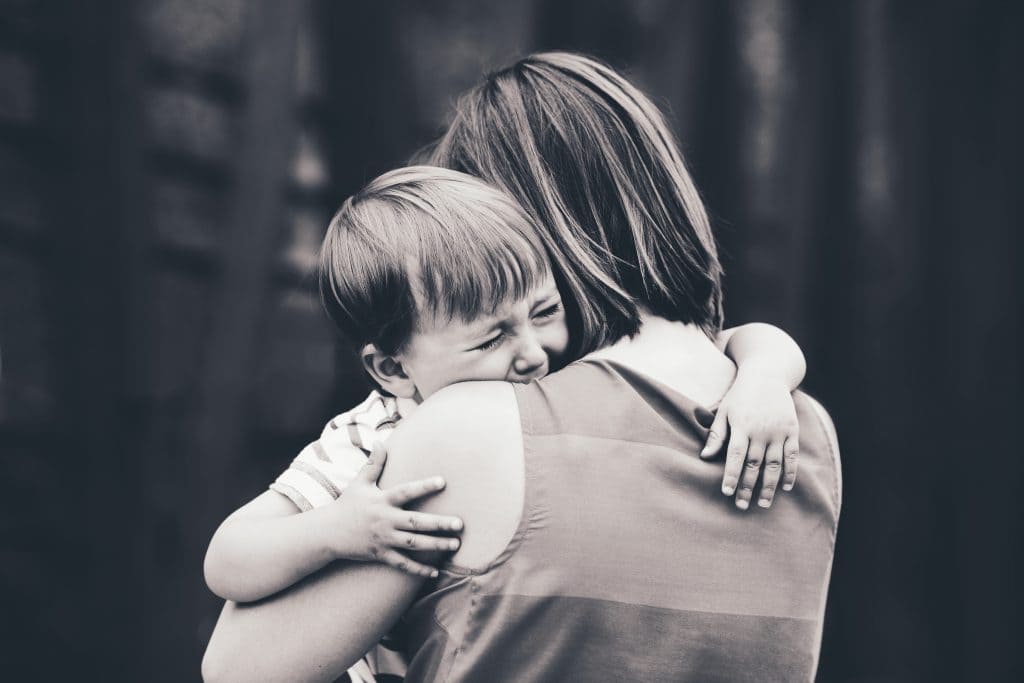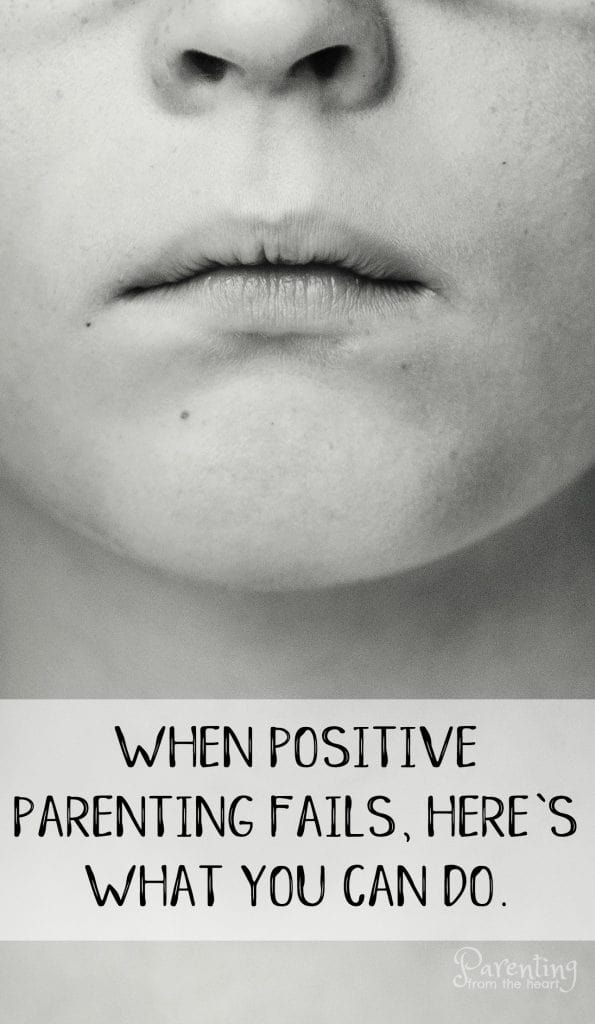When positive parenting seems to fail, these are practical strategies to get results and encourage your children to listen better.
“I love the idea of positive parenting but it doesn’t work for every kid.”
“Yes! Positive parenting doesn’t work for us either. We’ve tried our best and we aren’t getting anywhere.”
I had just published a post that I felt pretty confident about. I had read even more research than I normally do. And, I had chosen my words carefully. When I hit publish, the page views started pouring in. A big page shared it. A quick search and I was able to find where all the traffic was coming from. That’s when I saw those two comments.
Whenever a big Facebook page shares my content, I brace myself for a furry of rebuttal. Sometimes it doesn’t come, but there are times people seem to unleash pent-up emotion on content that doesn’t agree with them. These two comments, however, had my complete empathy and understanding.
The truth is, I once felt the same.
I was one of those little girls who dreamt about becoming a mom. For as long as I can remember, I have gathered information and ideas on how I would one day be the best parent possible. As a young teen, I babysat as often as I could, volunteered in kindergarten classes, and tutored kids. In university, I took developmental psychology and would unwind from school by watching way too much Nanny 911 and those sorts of shows.
When the time came, I knew I would be firm but loving. I would try and avoid spanking and use the recommended suggestion of 1 minute per year of age when giving my kids timeouts. I would do my best and get it right.
When my oldest approached toddlerhood, I decided to dig deeper into developmental psychological research. I started to learn more and more about why punishment is ineffective at teaching our kids to internalize our values. All of the research was there to back up this claim, but I felt lost.
How the heck was I supposed to parent effectively without punishing my kids?
Many times in the early days of parenting my daughter where I was mystified.
She would hit her baby brother.
I would tell to keep her hands to herself.
She would do did it again and look at me.
Or, I would warn both kids we were about to leave the park.
I would set the timer for the time we had agreed upon.
The timer would ring.
I would show them the ringing timer, count to three and find myself in a standoff.
What was supposed to happen at the end of three?
The truth is, I only had part of the positive parenting puzzle.
I understood that authoritarian parenting may temporarily increase compliance. Moreover, parents who want their children to embody their value should avoid using punishment to get their kids to behave. So that meant yelling, spanking, chastising, lecturing and timeouts were out. But I didn’t ‘get’ what I should be doing instead.

When Positive Parenting Seems to Fail This Is What You Can Do
When it comes to understanding positive parenting, an important distinction must be made. As mentioned before, authoritarian parenting is not ideal because it relies on external control. Specifically, it relies on punishment to enforce expectations. Permissive parenting neglects discipline while forgoing punishment. But, authoritative or positive parenting is the sweet spot in between.
The question remains, how does one use positive discipline effectively?
It starts with parenting proactively.
This means that I must remember to:
- Tell my kids what I expect of them before we start something.
For example, “When we are at the kids’ museum and you want to change stations, I need you to ask me and make sure I say okay.”
- Give them a heads-up before it’s time to clean up or stop doing something fun.
For example, “In five minutes, it’s time to turn off the iPad. I need you to set the timer for five minutes, please.”
- Make sure their basic needs are met.
For example, I need to ask myself have they eaten and slept well? Have I spent quality time with them or have I been preoccupied? Are they overstimulated? Do they need a break or a change of scenery? I can’t expect them to self-regulate and listen if their basic needs have not been met.
Additionally, positive discipline requires clear boundaries.
For our family we are firm when it comes to wearing seat belts, not hurting one another, and following through on what they’ve agreed to do. Matching clothes, whether they carry or wear their jackets, whether we leave the park immediately or in five minutes, testing out new ideas, crafts, or skills are all negotiable.
When these positive parenting strategies fail, this is how to enforce rules and expectations
In order to positively parent, parents and caretakers must be consistent.
For example, if the kids have agreed to clean up or leave the park when the timer goes off and then don’t listen, I need to hold them accountable. When they lose their cool and lash out at one another despite me reminding them to use their words, I need to ensure both kids are safe and that the aggressor understands to stop.
Here are some practical and powerful strategies to implement positive parenting:
Drop negative language where you can and use positive phrasing instead.
This makes your directions easier to understand.
Negative: “Stop jumping.”
Positive: “Sit on your bum.”
The first example the child has to process what you have told him and figure out what he should instead.
Here are some other examples:
Negative: “Don’t run.”
Positive: “Walk, please.”
Negative: “Don’t hit.”
Positive: “”Hands to self.”
In the positive examples, the child doesn’t have to deduce what you want her to be doing instead. (Read more about this here.)

Empathize and label their frustration.
When I empathize with my kids, I make them feel validated. It also helps them understand how to express themselves in the future.
Ask them why they aren’t listening. Then listen to them.
It is surprising how many power struggles are diffused by listening to my children. I ask, “What’s up?” Then, I let them take turns to get every little thing off their chests. I wait until they’re done speaking. Then, I reiterate what I expect them to do. Almost every single time, after they have said their piece, they are calm and ready to cooperate.
Give two options with the same outcome.
For example, do they want to clean up now or in five minutes? Do they want you to put on their seatbelts or do they want to do it themselves? (Read more about why this works here.)
Wait it out.
Sometimes, I just need to patient and wait for compliance. For example, when my son refused to take his bike home from the park, I told him I would wait as long as it took to go the one block home. It took a while, but soon he realized nothing was going to happen until he’d finished.
Scaffold their cooperation.
All too often I forget how overwhelming life can be for someone so young. When my children can’t seem to listen, I try to work with them to help them.
Remove them from the situation.
Some call this ‘time in.’ Basically, all it is is a timeout where I stay with my child until he or she is calm and ready to make good choices.
Use modelling.
When I feel like I’m going to lose my cool, I express how I feel and explain how I am going to calm myself down. Since I’ve started this, I’ve noticed my daughter will say things like, “I feel so mad I want to hit you.” But she doesn’t hit like she used to.
Positive Parenting can feel like it doesn’t work because it takes practice, consistency, and effort. The good news is that in time, it becomes easier and becomes a little more like second nature. Then children start to embody our example. Instead of responding out of fear of punishment, they cooperate because they feel it’s right. That makes it worth all the effort.
For additional resources like these, check out:
Your Kids Will Listen if You Do This
7 Step Parenting Success System
Stop Yelling at Your Kids with One Simple Trick
Time-In vs. Timeout: How to figure out what’s right for your family













I still feel like I don’t know how to make this work with my children. So in your example of kids needing to leave the park, “………….And they don’t listen I need to hold them accountable “ How do you hold them accountable without rewards or consequences? This is my problem with everything I read about positive painting! Can you please tell me how you hold them accountable?! Same paragraph says “………and that the aggressor knows to stop” What about when the aggressor nose to stop, how on earth do you make them stop! I’ve modeled not hurting people their entire lives, we’ve never spanked. I’ve talked over and over and over again about how it’s never OK to hurt people. They still continue to fight and hurt each other, what do I do if I’m not supposed to do consequences or rewards? It’s so frustrating! This way of parenting speaks to my soul and I wanted to work so badly, but so far I’ve been unsuccessful.
I still feel like I don’t know how to make this work with my children. So in your example of kids needing to leave the park, “………….And they don’t listen I need to hold them accountable “ How do you hold them accountable without rewards or consequences? This is my problem with everything I read about positive painting! Can you please tell me how you hold them accountable?! Same paragraph says “………and that the aggressor knows to stop” What about when the aggressor does know to stop, but doesn’t! how on earth do you make them stop! I’ve modeled not hurting people their entire lives, we’ve never spanked. I’ve talked over and over and over again about how it’s never OK to hurt people. They still continue to fight and hurt each other, what do I do if I’m not supposed to do consequences or rewards? It’s so frustrating! This way of parenting speaks to my soul and I wanted to work so badly, but so far I’ve been unsuccessful.
Crickets chirping….. That’s the problem, there is no solution (or you give the solution a nice name like “calm down corner” https://www.momresource.ca/parents/positive-parenting-alternatives-to-timeouts/). I think positive parenting is a great theory, and a great idea. I think it should be practiced whenever possible, but at some point, or maybe to rephrase, in some situations, another solution is needed (“calm down corner”). The fact that every solution I’ve read does not deal with the situation you describe leads me to believe that at times a different approach is necessary, which should be acknowledged more clearly. Of course someone that practices positive parenting has had their kids suffer consequences. Maybe we’re doing it wrong, but life isn’t perfect. My kids need fresh air, and sometimes that means I need to make just 15 minutes work because of naps, dinner, etc. I can’t section off 2 hours every time I want to go to the playground so I can positive parent and take one hour to leave.
I think positive parenting creates a negative attitude when it fails in these situations – it’s stressful trying so hard at something and not getting through. When two couples get in an argument sometimes the best advice is to take a 15-minute break, or sleep on it. The time out may not be for the child, but for me. So in lieu of a solution maybe a quick timeout is best. I’m sure my negative emotions are far more harmful than my kid learning about consequences at the age of 3. Give it three minutes (a minute for each age! it gets better after 3 right 😊) and then go back in and talk to the child.
Deep breath, by virtue of knowing about this, working hard to be positive parents and a positive influence, we’re not screwing up our children – yet anyway. Love them, talk to them, read to them, play with them, and talk some more. Science says, on average, they’ll be fine!
Hi Seth,
I apologize for the belated reply. I’ve largely been offline over the summer. You bring up some invaluable points.
First of all, there are many positive tactics that can work in these situations that include taking your child from the playground. If there is a time constraint, you absolutely should pick your child up and head on home. The important thing here is that children understand that there are boundaries, we understand it isn’t easy for them to follow these limitations, but they exist definitely nonetheless.
Waiting can be a very powerful tactic, if and when you have the time.
In terms of calm down corners, experts in the field suggest taking a timeout with your child when you can as to be there to help him/ her calm down and to provide discipline. That said, parents and children absolutely do need time away from one another to cool down. And parents shouldn’t feel forced to abide by certain rules 100% of the time at the sacrifice of staying calm or allowing their children the chance to calm down on their own.
I hope that’s provided some clarity. If not, comment again and I’ll do my best to answer in a more timely fashion.
Hi Jamie,
I can totally relate to your frustrations and feeling like your hands are tied and can’t quite follow through.
In the case of the park, I do one of two things:
1. wait and say I’ll wait as long as it takes (there have been times it’s taken as much as ten minutes but as children learn that your boundaries are, in fact, boundaries, they test them less and respect them more.
2. if the child is running away, endangering himself or others or we’re under a time constraint, I pick him up. In her book, Peaceful Parent, Happy Siblings, Dr. Laura Markham explains that there are times that a reasonable power needs to be used. This sort of situation may be one. As you remove your child, he or she might be quite upset. You may have to ride out his or her emotion while following through on your rules.
When it comes to siblings hurting one another, I recommend using a time-in. First make sure the child who was hurt it is okay. Then, take the child who has hurt to the side or to his/ her room. Some children like to be with the parent as he or she works through big feelings. Others don’t. The important part is that you’re available for your children if they need help calming down and to come up with a better course of action the next time they’re angry.
I hope that helps. Please feel free to let me know if you have any additional questions.